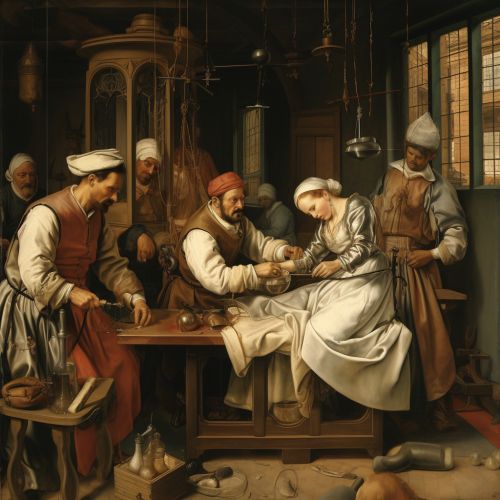Ambroise Paré
Early Life and Education
Ambroise Paré was born in 1510 in Bourg-Hersent, a small village near Laval, France. His father was a country artisan, and Paré was expected to follow in his footsteps. However, Paré had a keen interest in medicine from a young age. He began his medical training as a barber-surgeon apprentice in a local hospital, learning basic surgical and medical skills.


Career
Paré moved to Paris in 1532 to further his medical studies. He was accepted into the prestigious Hotel-Dieu, one of the oldest hospitals in Paris, where he worked under the guidance of renowned surgeon Jean de Vigo. Here, Paré was exposed to a wide range of medical and surgical cases, which significantly enhanced his knowledge and skills.
In 1536, Paré joined the French army as a military surgeon during the Italian Wars. It was during this time that he made several significant contributions to the field of surgery.
Contributions to Surgery
Paré is best known for his innovative approach to treating gunshot wounds. At the time, it was common practice to cauterize gunshot wounds with boiling oil, a painful procedure believed to prevent infection. Paré, however, ran out of oil during one battle and instead used a mixture of egg yolk, rose oil, and turpentine. He found that this treatment was not only less painful but also more effective in promoting healing.
Paré also made significant advancements in the field of amputation. He developed a new technique, known as the "Paré method," which involved ligating blood vessels to control bleeding during amputation. This method was a significant improvement over the previous practice of cauterizing the wound with hot irons.


Later Life and Legacy
Paré continued to serve as a military surgeon until his retirement in 1575. He then returned to Paris, where he continued his medical practice and wrote extensively about his experiences and findings. His works, which include "The Method of Curing Wounds Made by Arquebus and Other Firearms" and "On Surgery," are considered seminal texts in the field of surgery.
Paré died in 1590, but his legacy lives on. He is often referred to as the "Father of Modern Surgery" for his innovative techniques and his commitment to improving patient care.
